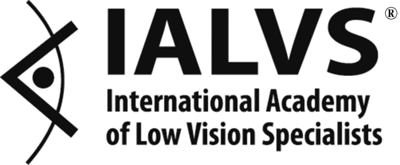As parents, we strive to give our children the best chances to grow, learn, and succeed. Unfortunately, some kids may struggle with low vision due to Juvenile Macular Degeneration or Juvenile Retinoschisis.
Although there may not be a cure for these conditions, a helpful solution can enhance their daily lives: low vision aids.
Understanding Low Vision Conditions;
Children dealing with conditions like Juvenile Macular Degeneration, Stargardt disease, Best disease, or Juvenile Retinoschisis face unique challenges related to their vision.
These conditions can significantly impact their vision clarity, making daily activities that many take for granted, such as reading, writing, or watching TV, a real challenge.
1, Juvenile Macular Degeneration
This condition affects the macula, the central part of the retina responsible for sharp, detailed vision. Children with Juvenile Macular Degeneration may experience central vision loss, which can interfere with tasks like reading or recognizing faces.
2. Stargardt Disease
Stargardt disease also primarily affects the macula. It often manifests in childhood or adolescence, leading to central vision loss and difficulty with tasks that require precise vision.
3. Best Disease
Also known as vitelliform macular dystrophy, Best disease can result in a gradual loss of central vision due to changes in the macula. It typically affects children and young adults.
4. Juvenile Retinoschisis
This condition leads to splitting of the retina’s layers in young boys, affecting their central and peripheral vision.
Low Vision Aids: Enhancing your Child’s Vision
When dealing with low vision conditions, it’s essential to explore the range of low vision aids available to maximize your child’s remaining vision. These innovative aids are not mere tools but gateways to a world of possibilities. By enhancing your child’s vision clarity, these low vision aids empower children to engage in activities they love most, opening up new avenues for learning and exploration.
Here are some low vision tools that can make a substantial difference in the lives of children with low vision:
- Magnifiers: Magnifiers are optical devices that can enlarge text or objects, making them easier to see. They come in various forms, from handheld magnifiers to stand-mounted versions.
- Telescopic Lenses: Telescopic lenses can provide significant magnification, allowing your child to see distant objects more clearly. They can be beneficial for activities like watching sports or enjoying outdoor events.
- Tinted Lenses: Tinted lenses can help reduce glare and improve contrast, making reading or engaging in outdoor activities more comfortable.
Non-Optical Devices
Beyond optical aids, non-optical devices can improve your child’s quality of life.
- Closed-circuit TV systems: These can magnify text and images on a screen, making reading more accessible.
- Large print books and adaptive technology: These devices include tools like electronic tablets with accessibility features are also valuable resources.
By working closely with a low-vision optometrist, you can explore these tools and find the most suitable options for your child’s needs. These aids enhance their vision and offer newfound independence, helping them engage in daily activities and educational pursuits.
If you want guidance and support in enhancing your child’s vision and improving their quality of life despite low vision conditions, contact the Low Vision Optometry of Central Pennsylvania in Lititz.
Together, we can explore the possibilities and empower your child to see a brighter future.

